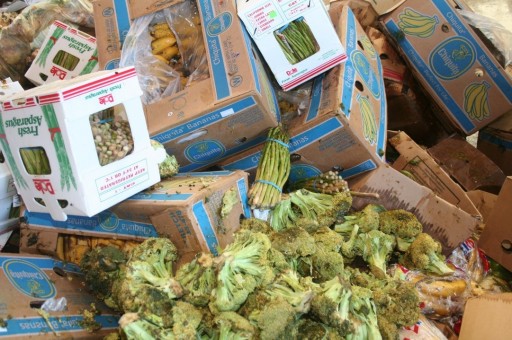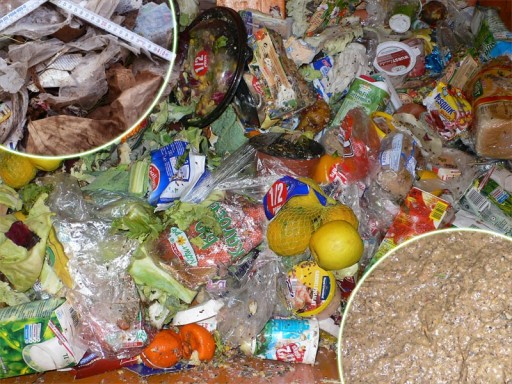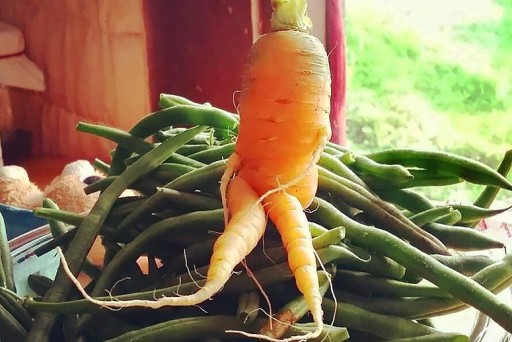By Lucie Koritkova
Have you ever wondered what happens to all the unsold food in the supermarkets, restaurants etc? You probably find it already “normal” to throw away some of your uneaten food every now and then. But we are not talking about some small amount of overripe bananas thrown away. Food wasting has become a world issue having much bigger effects on the whole planet than you may even imagine. According to FAO the economical value of all wasted food in the world every year equals the whole yearly GDP of Switzerland. Why is that? 1/3 of all the food produced will actually never be eaten and end up in the rubbish bin. Surprised? Majority of it being still totally eatable. We consumers often think we can not change anything. Really? Who are in the end the people all these products are made for? Yes, us, consumers. If we don’ t buy, there will be nobody to sell to. And there we go. We need to make sure the supermarkets and governments know we are not OK with the alarming amount of food wasted every day – mostly totally unnecessarily. Time to do something about it. Especially when realizing that every 7th person on the planet is suffering from hunger…
Abundance – reality for the western world. We go to the supermarkets which are trying to give us the feeling of overflowing richness and vast choice. So we got used to it and take it as a norm. We take it for granted that all the kinds of vegetable and fruit are available fresh all year long. You go to a restaurant and there is a huge choice of fresh meals for you to choose from. The portions are often unreasonably big that plates are regularly left uneaten. Shelves of the bakeries and cafes are overfilled with fresh sandwiches, cakes and other food ready to go.
 But what is the real price of all this overflowing abundance? 1.3 billions of food which is wasted in the world every year. Which means that about 1/3 third of all the food produced is never eaten. And yet there is another reality people live in – hunger – reality of the eastern world. Almost 1 billion people are hungry worldwide. On the contrary around 1.5 billion people are overweight and 400 million are obese. European countries have three times more food than they actually need. A slight imbalance, isn’t it?
But what is the real price of all this overflowing abundance? 1.3 billions of food which is wasted in the world every year. Which means that about 1/3 third of all the food produced is never eaten. And yet there is another reality people live in – hunger – reality of the eastern world. Almost 1 billion people are hungry worldwide. On the contrary around 1.5 billion people are overweight and 400 million are obese. European countries have three times more food than they actually need. A slight imbalance, isn’t it?
So how come we waste such a vast amount of food? It all starts with the farmers. Supermarkets and the EU set absurd regulations about the shape, color or texture of the food accepted for the sale. They require all the vegetables and fruit to look exactly the same like from a factory. But this is nature not an assembly line. So it results in huge amounts of food wasted even before reaching the shops just because of their “non-perfect” look. An example can be too small potatoes, beans which are not straight and long enough or a crooked carrot. Does these silly appearance faults really make them uneatable that they have to be plowed back to the soil right after they have been harvested or even worse end up in a landfill? Is it a beauty contest or are we still using common sense and concentrate on quality rather than appearance?
Supermarkets have enormous negotiate power so they set contracts where farmers have to commit to a certain amount threatened by sanctions when failing. In order to make sure they meet this requirement they regularly make overproduction – even 140 % by certain kinds like salads or carrots (source: Tristram Stuart: Uncovering the Global Food Scandal).
The “lucky” pieces go on to a “trip” to the warehouses and supermarkets. As a big part of our food gets to us from very far away (from developing countries) many times the transport and storage is not so efficient which leads to another unnecessary waste. Before the food gets to the shelves it is checked to be in a perfect shape. Once, for example, fruit or vegetables are bruised or just the package is somehow slightly damaged they are thrown away. When you have prepackaged fresh fruit or vegetable and just one piece is not OK the whole package goes the rubbish as you can not sell it loose anymore.
So the “good” pieces which made it to the shop shelves are now waiting to be bought. But as there are always too many of them to give you the impression of surplus much of the food will simply end up in the huge container hidden behind your “nice” supermarket so you don’ t know about it. Bread and other bakery products are wasted the most – almost half of the bakery is wasted. What is even sadder that some supermarkets even don’t allow their employees to take the food home or don’t let other people take it who would still eat as they simply lock their containers. At the same time there many people also in the developed countries who would be very happy for this food. According to statistics of Eurostat every fourth person in EU is endangered by poverty or already living in on the edge of poverty.
The EU households produce an alarming 40 % of all wasted food ( source: Counting the Cost of Food Waste: EU Food Waste Prevention). Which means that average European citizen produces about 96 up to 115 kg of wasted food every year (resource: http://www.fao.org/save-food/resources/keyfindings/en/). Many consumers are still confused by “Use by” label which signifies that after this date the product does not have to be harmless to health whereas after the “best before” date is the product usually totally fine for consumption and does not need to be thrown away. This is the place where we consumers may think a little bit what we personally could do to reduce the food waste.
Gastronomy and catering play also a very important role in food wasting. Partly because of the exaggerated too strict EU regulations, unnecessarily big portions and too big choice of the fresh meals which require keeping big variety of fresh food available all the time and being then wasted as you can never fully estimate the demand and the life time of it is very short. Maybe next time you go to a restaurant you could consider having the daily offer instead of the dish from the standing offer.
 All this is obviously a huge economical loss but mainly an environmental one. We are not just throwing away food itself but also all the water, energy, human work together with the soil which was damaged by the chemical fertilizers and pesticides, all the packages and transport (gasoline) just to end up in the rubbish bin.
All this is obviously a huge economical loss but mainly an environmental one. We are not just throwing away food itself but also all the water, energy, human work together with the soil which was damaged by the chemical fertilizers and pesticides, all the packages and transport (gasoline) just to end up in the rubbish bin.
The biggest damage is by animal products as they require huge amount of water and other resources. For example to produce 1 kg of beef meat you need about 15 500 liters of water (source: The water footprint of food). Most of it to produce the animal feed. Pigs in Europe are fed mostly with soy. Majority of it is grown in south America where the rain forests are cut to meet the ever growing demand.
Considering also the ethical site – majority of the animals come from the mass production with the legal but miserable conditions totally not fulfilling their needs, after suffering whole life, they get slaughtered just to end up in the rubbish bin. Not so OK, right? Not mentioning the fish production where half of the fish caught are killed totally unnecessarily as they are not the right type of fish or don’t correspond with the EU quotas and killed dolphins together with the turtles and other sea food caught in the same net are seen as a normal “by product”. Did you know that to get 1 kg of the requested fish there are another 16 kg of unnecessarily killed sea animals (Tristram Stuart: Uncovering the Global Food Scandal)? It is high time for us to open our eyes and face this problem.
So what can you do about it? First of all you can sign the petition on change.org to stop food wasting of the supermarkets in EU. To tackle this problem it needs to be done systematically. You think it can not make any real change? Oh yeah it can! Arash Derambarch, a municipal councilor in France launched such a petition last year and now it is illegal in France for the supermarkets to throw away unsold food. They have to give it to the charities otherwise they face high penalties. So you see your voice does count.
Here are some food waste reduction tips:
- Shop at your local farmer’s market. The food doesn’t have to “travel” to you all around the planet, so it is really fresh and so much better for the environment. Also farmer’s markets don’t hold the same absurd high aesthetic shape and size standards as supermarkets, so there is no necessary waste even before the vegetable leaves the field. Plus you know who you support with your money. You allow somebody to work independently and maybe doing what they love. Owners of the huge supermarkets are already rich enough.
- Become a part of a community supporting their farmer. You share the risks and benefits with the farmer. When the harvesting time comes the community gets all the “treasures” from the field.
- Try veggie boxes. There are farmers in our neighborhoods, we don’t really need to import everything from all over the world. You can just order them easily via internet and they can be delivered to your home or you pick them up in a certain place. You can get also organic versions. It is really fresh and you support local economy.
- Buy seasonal and local food. Have you ever checked for example the fresh green beans in winter where they come from? Top producer is Maroco… Some apples make a world trip to get to your belly as they come from New Zealand. Meat from South America? Ok. Banana cannot grow in Europe. But tomatoes, grapes, apples, green bean,.., they can, right? So next time let’s make an experiment and see where your veggies and fruits come from. And the taste of a ripe fresh nicely red tomato in summer grown in your country compared to this sad wish-washy tasteless “brother” crouching in a plastic box tired after the long journey from Africa…
 Buy “misshaped” fruit and vegetables. Show the sellers you are fine with these “imperfect guys”. Honestly – do you really think that a crooked carrot tastes sooo different that it has to be thrown away? (little secret – it tastes just the same.:)).
Buy “misshaped” fruit and vegetables. Show the sellers you are fine with these “imperfect guys”. Honestly – do you really think that a crooked carrot tastes sooo different that it has to be thrown away? (little secret – it tastes just the same.:)).- Don’t be tempted by sales or buying in bulk, buy just what you really need.
- Try to avoid buying pre-cut fruit and vegetables, not only saves it your money but they spoil faster.
- Talk to your grocery store (ask the manager, send them an e-mail, fill in the customer comment card) if they would consider selling less than totally “perfect” fruit and vegetables and having a discount bin with the food nearing the “best before” or “use by” dates.
- Ask your grocery store if they donate the unsold food to the charities and what they do with their food waste. Let them know it does matter to you what they do about the food waste.
- Cook for yourself (restaurants produce huge amount of food waste). If do go to a restaurant when the portions are too big ask them to pack the rest for you as take away (having your own box make you a real “green hero”) or just share the dish with your friend so you both save money and have fun eating together.
- Reuse the leftovers, if you cannot eat it now, freeze it, give it to your friends, work colleagues or a homeless person.
- Buy less animal products. Besides contributing positively to your health and environment. Animal products need to be consumed quickly, as they are more likely to get spoiled and are also more difficult to recycle.
- Store legumes, seeds and grains in glass jars. It helps to keep a better overview on the food, keeps food safe and eases the food preparation, serving and clean up;
- Compost. If you can’t compost in your house, check out if there’s any public compost in your surroundings.
- Educate other people. Maybe they just don’t realize how extensive consequences their shopping and everyday behavior has on our planet. They might be willing to make some positive changes.
- Stay positive – your even little contribution counts!
Curious to find out a little more about food waste? Have a look at this trailer to Taste the Waste.
https://www.youtube.com/watch?v=jA1m2aKkqdQ
Or go to:
